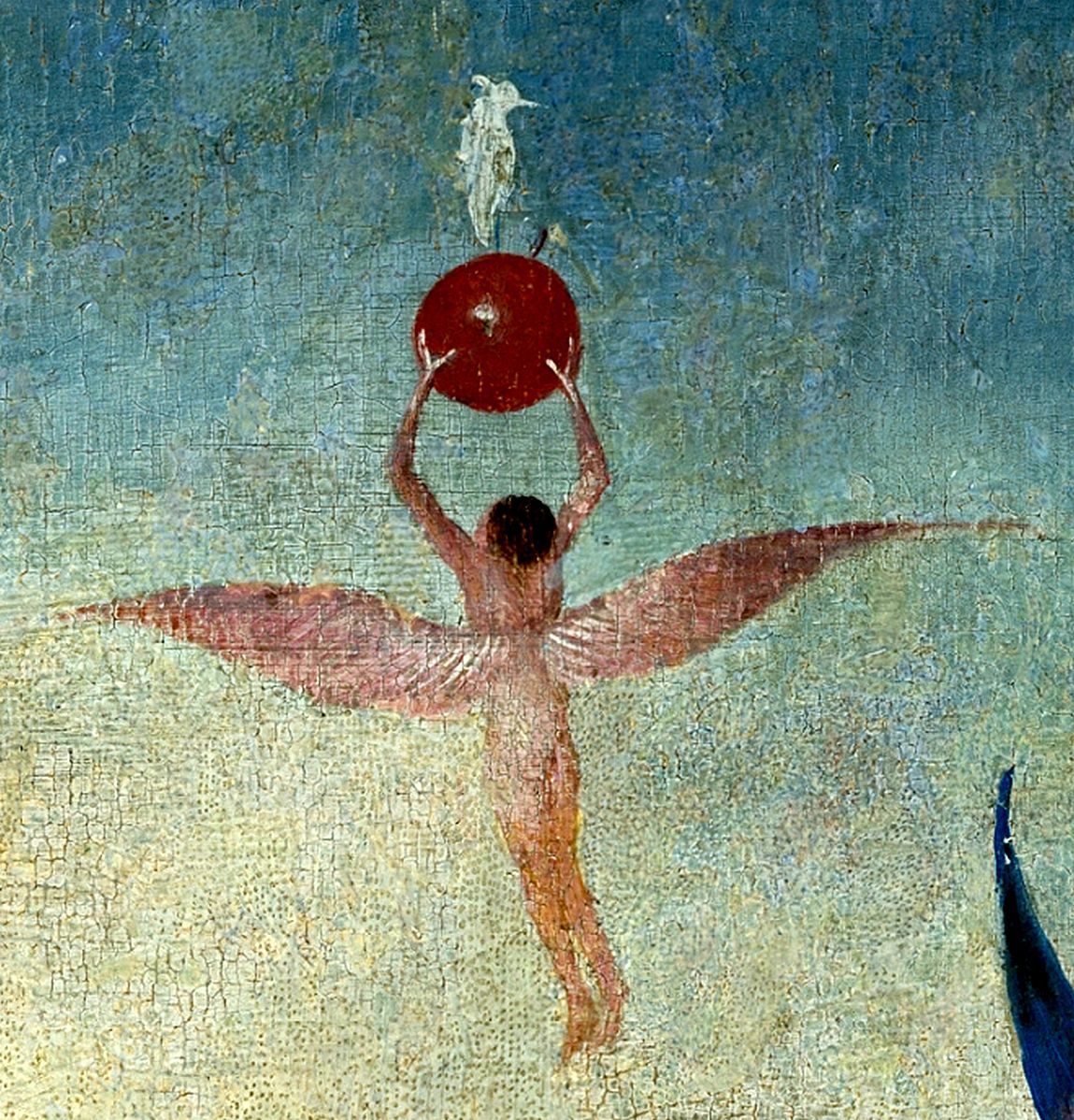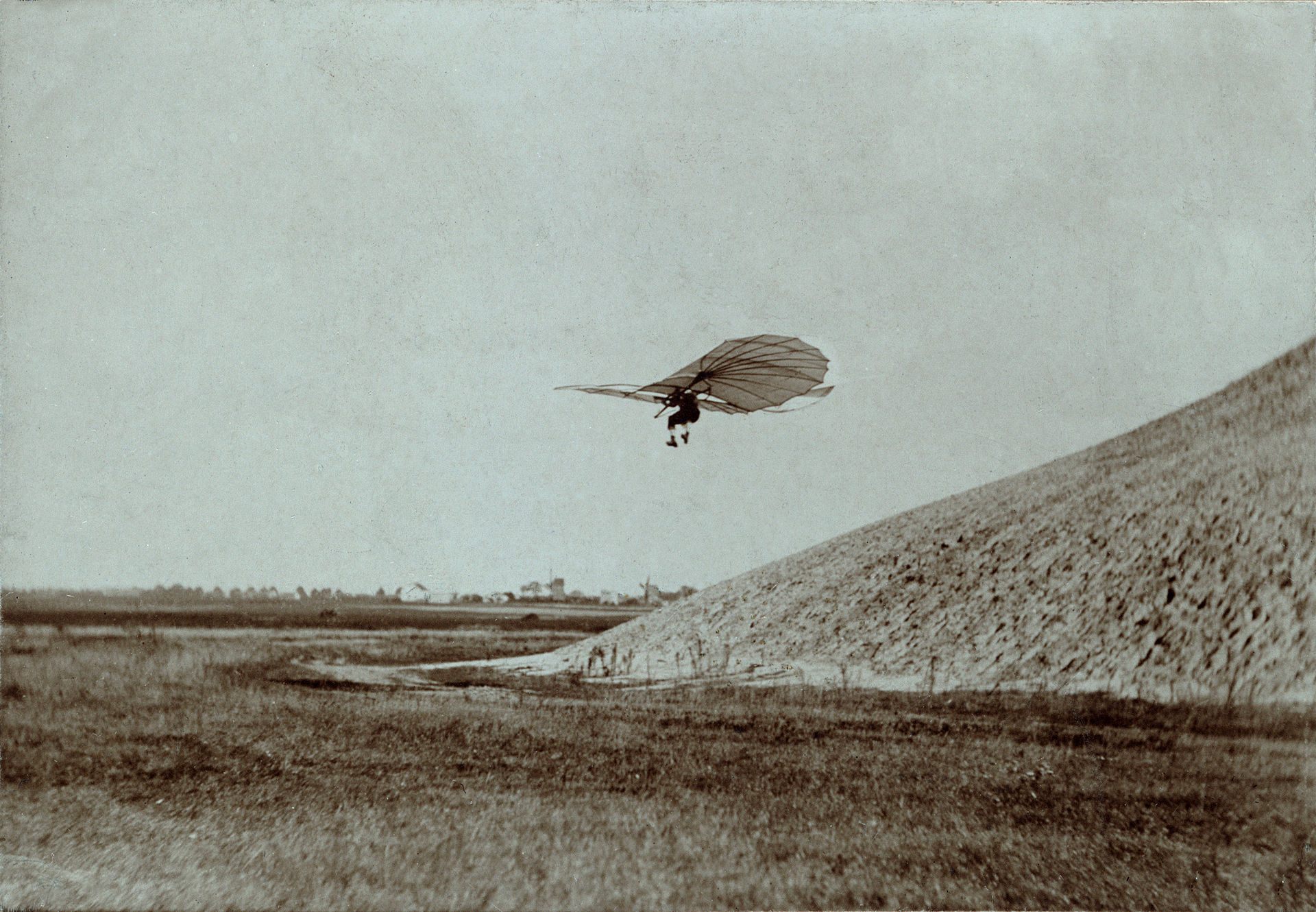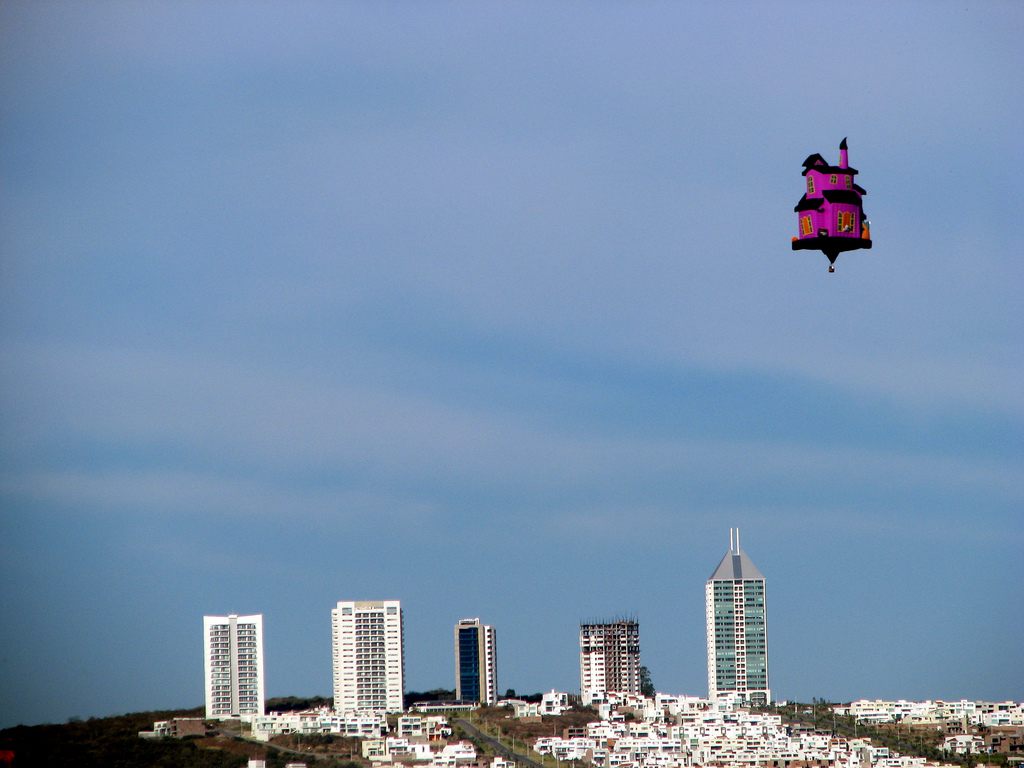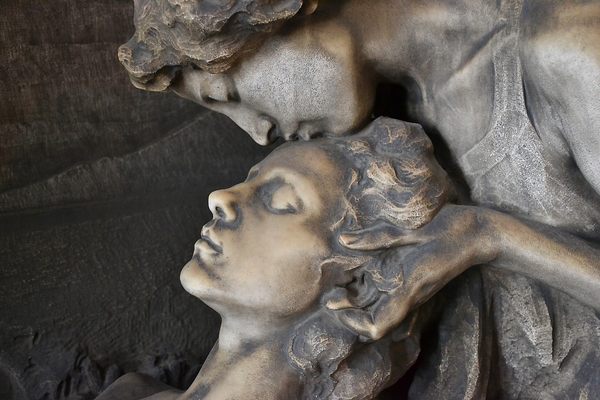Why We Love to Fly In Our Dreams

A flighty detail from Hieronymus Bosch’s “The Garden of Earthly Delights.” (Image: Prado Museum/WikiCommons Public Domain)
It’s one of the stranger things about being human that we can spend all night flying and then wake up in our own beds.
A brief, very unscientific Facebook poll reveals that people treat this night pastime like a real hobby, with different flying strategies and concerns:
“I kind of imagine a lightness in my chest and fling that ‘weightlessness’ in the direction that I so choose”
“I fly really close to the ground… kind of like a skateboard, but with no skateboard there”
“It was like superman, or a ghost. I didn’t have to think about it any more than I think about walking.”
“A couple times I had dreams where I could jump higher and higher ‘til I was leaving the atmosphere and able to travel far distances by aiming my jumps.”
Others stuck to swimming, flapping, or gliding motions. These contemporary dream-flyers join a storied legacy: in 1921, Mary Arnold-Foster described wearing a “flying dress,” a “dress of straight close folds which fall three or four inches below my feet,” in order to hide the fact that she wasn’t walking like everyone else.
Does this sound a little boastful? It might be justified. If you find yourself soaring through the sky at night, you deserve a few stunned looks and pointing fingers. Dream flying isn’t necessarily a random fluke of neuron-firing—it says something about how you think.

“Landscape with the Fall of Icarus,” by Pieter Brueghel the Elder. (Image: Royal Museums of Fine Arts of Belgium/Public Domain)
The first thing dream scientists will tell you is that it’s very, very hard to study dreams. “It’s difficult to get people to dream if you stick them in an fMRI machine,” explains Dr. Tadas Stumbrys, a dream researcher at Vilnius University in Lithuania.
This hasn’t stopped people from trying. Psychologist Dr. Rainer Schönhammer has compiled scientific flying-dream explanations going back to the early 19th century. Many of the earliest guesses were physiological—1860s German psychologist Karl Scherner thought that the rising and falling of the chest inspired dream flight, while his peer J.E. Purkinje believed that the relaxation inherent in sleep makes dreamers feel like they’re floating. The more Freudian Paul Federn pinned it on nighttime erections, which, author Diedre Barret explains, he “viewed as an overcoming of gravity,” but this theory has since been discounted. More recent theories have focused instead on the brain stem and the inner ear, which controls balance.
Although he doesn’t knock the potential physiological causes of dream-flying, Dr. Michael Schredl, a psychologist with the Central Institute of Mental Health in Mannheim, is more interested in what such dreams and such distinctions might say about the dreamer. “Flying dreams are a fascinating topic,” Schredl writes in an email. In a series of studies, Schredl has sought to connect the prevalence of flying dreams with particular personality traits or life choices. By compiling dream data gathered since 1956 and performing both broad and deep surveys of his own, he has come to a few zooming conclusions.
First of all—anecdotally at least—”persons with waking-life flying experiences dream more often about flying,” Schredl writes. Hang gliding instructors, for instance, often practice their professions in dreams, only without their equipment. And the fact that the frequency of flying dreams has picked up since the 1950s suggests that more real-life airplane trips equals more somni-flight. This would be consistent with the “continuity hypothesis” of dreams, a somewhat controversial theory that posits that our dream experiences are just weird remixes of our waking ones.

Otto Lilienthal gliding in his waking life in 1895. (Photo: Library of Congress/WikiCommons Public Domain)
To dig deeper into these hypotheses, Schredl analyzed the 6,000-entry dreambank of one particular anonymous subject, who has kept a diary since 1984. Schredl found that although this subject had more airplane dreams after his first ever real-life transatlantic flight, more creative flying dreams weren’t affected. The subject sometimes flew with the help of a house, a magical juggling ball, or a unicycle, and he did so in order to illicitly cross borders and to impress a girl (“and he succeeded!,” the study makes sure to point out).
Airplane journeys, Schredl writes, may be less important than general happiness. A broader Schredl-helmed study shows that overall, people with more “positive emotional states” while awake tend to get to fly in their sleep, too.
For some more deliberate dreamers, dream-flying is not a quirk of physicality or personality, but a conscious unconscious decision. Stumbrys studies lucid dreaming–a type of dream where the dreamer knows he or she is sleeping, and can control certain aspects of the situation. For a 2014 study published in The American Journal of Psychology, Stumbrys and his colleagues (including Schredl) surveyed 684 lucid dreamers about their most common dreamworld activities. “Flying came in at #1,” Stumbrys said in a recent Skype interview–a full one-third of people reported some amount of dream-flying. It beat out a number of other common pastimes, including sex, sports, and “fighting, killing or weapons” (along with some less popular ones, such as “looking at hands” and “crying or screaming”).

“The Purple House” at the 2007 Léon Balloon Festival in Mexico. (Photo: eperales/Flickr)
Lucid dreamers are, to a certain extent, able to plan their dream activities while awake, and even more of those studied—a full half!—made plans to fly. These plans may have informed their flying styles, posits Stumbrys. “In lucid dreams, your expectations really shape the dream,” he says. So if your waking self pictures Superman while you’re plotting out your dream itinerary, “that idea will be in your mind, and that will be the way you can fly.”
Stumbrys is careful to point out that the relationship between lucid dreams and flying isn’t necessarily causative. “It might be that people who lucid dream, one of their favorite activities is flying,” so they take advantage of their insider knowledge to take off, he says. On the other hand, though, flying might cause lucidity: “if you discover that you’re flying,” he points out, “that’s a good sign that you might be in a dream.”
In Stumbrys’s first lucid dream, which was so impactful that it kicked off his whole professional career, he nearly flew out of a window but as he stood on the sill, he realized his fear of heights had crossed over to the dreamworld with him. By now, though, he indulges frequently. “The feeling is really amazing,” he says. “If I don’t have any other plans, usually I will just fly.”







Follow us on Twitter to get the latest on the world's hidden wonders.
Like us on Facebook to get the latest on the world's hidden wonders.
Follow us on Twitter Like us on Facebook